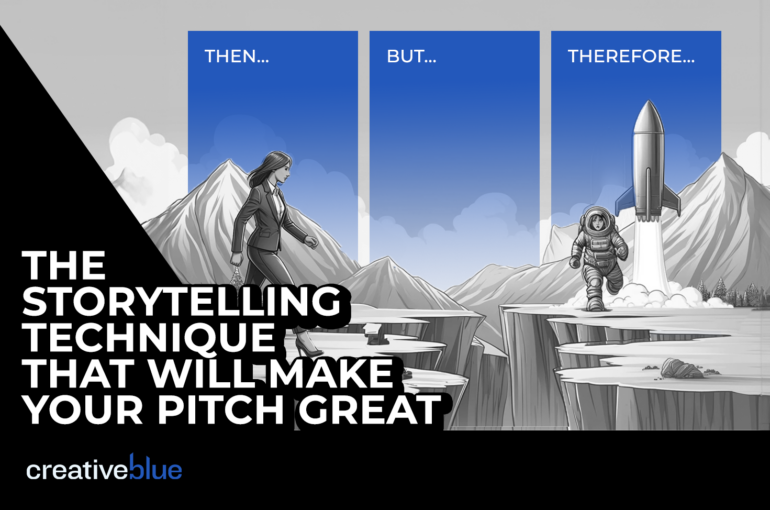The “But, Therefore!” Storytelling Technique to Make Your Pitch Great
The “But, Therefore!” Storytelling Technique to Make Your Pitch Great

When most people have a pitch coming up, they’ll Google, “what do I need to include in my pitch deck?”
They’ll see all the points that they don’t want to forget: a TAM slide, or the business plan, or the team slide. They’ll just stick those in, one after the other.
“This is our team, and then this is our total available market, and then this is our business plan.”
See how the transition between each of these is “and then?”
That works to make a very standard, unremarkable deck.
But what we want to offer to you is a storytelling method. You use this method before you slot in all the “necessary” slides, so that you have a compelling narrative that draws people up to a crescendo. What is the actual story? What are you telling them that builds this crescendo of agreement to action. After you’ve nailed that, then you can make sure to include all the necessary information where it might fit in the story. TAM slides, etc.
It’s simpler than it sounds: set aside a meeting with your leadership team to practice your pitch. Write down the flow you come up with. Tell it something like this:
“We noticed there was a market need for X, but the solution was difficult to create because it requires Y. But, our recent partnerships with so and so proved that there is a way to bypass that. Therefore, we’re seeking funding to expedite the development of product Z and go to market immediately while there is little to no competition.”
That’s already a much more compelling story. It also answers the question, why you? why now? without you having to say it explicitly.
The South Park guys were the ones who first came up with this process. They often go from no story to a finished script in less than 6 days. “But, therefore,” is how they do it.
Every time they get to a new beat in their story, if the transition is, “and then,” meaning, it’s not meaningfully connected to the previous part, they rework it so that it’s more a “but” or a “therefore.” It either needs to be a contradiction to the scene that you previously saw, or it’s logical conclusion. That way, everything is always interconnected.
This is very simple.
People struggle with this because they believe (rightly so) that there are specifics that people will be looking for. And that’s what brings them to googling that checklist, for fear that not checking a box means not succeeding.
But the point of a pitch is not to have compiled a bunch of seemingly disconnected information.
What you’re trying to do is compel people to help you with a specific goal. A partnership. Funding. Trust.
You’re trying to get people on your team.
Yes, you’ll still make sure you dot all your I’s and cross all your T’s while you’re polishing it up. But the real goal of it is to drive a motivation, to pull an emotional crescendo, so that people not only see the logic, but they feel the emotional, “A-ha!”
So there’s two key things.
- Keep your goal in mind and understand who your audience is.
- Build out the pieces of your slide deck so that each one is either “but” or “therefore.”
And if you achieve both of those things, your pitch will go from mediocre to perfect for the sort of person that you want to partner with. They will understand the goals of your business and, if they’re the right person for you, enthusiastically want to be a part of it. (Pssst. If you’re now wondering if every pitch needs to be custom-tailored to who you’re pitching to, read our last post!)
If this feels daunting, reach out to us and we’ll show you how to do it.
